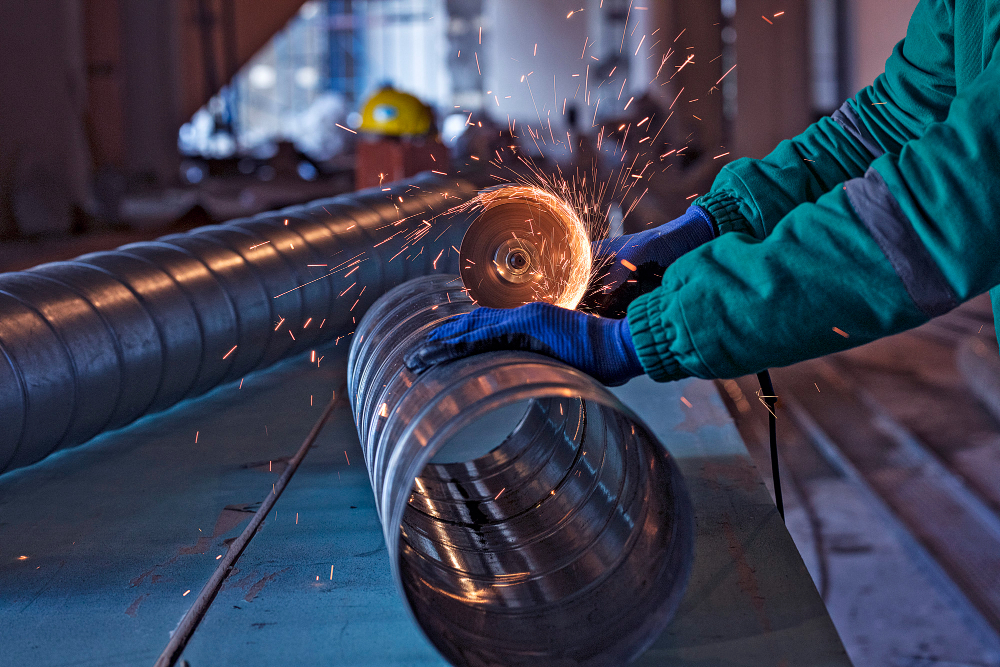SAFETY COMMITMENTS
At Aarav Mechanical Engg., safety is taken seriously and considered a top priority in all aspects of the business. The company’s rigorous safety program, permanent safety inspector, and strict adherence to safety regulations have resulted in a flawless safety record, with no loss of man-hours due to accidents during its entire period of works. The company’s commitment to safety is reflected in its objective and requirement for each project: zero accidents, zero environmental incidents, and adherence to standard safety working practices and procedures. All employees, contractors, and visitors assigned to the project are responsible for their own safety and for those around them, and the project manager is tasked with formally evaluating specific risks and communicating them to all personnel executing the work. In the event of an accident, prompt action is taken to address the situation. Regular safety toolbox meetings are held with the workforce, and a proactive approach to safety management is adhered to at all times.
The importance of safety at Aarav Mechanical Engg. cannot be overstated. Safety promotes awareness, prevents accidents, and improves performance. By placing a strong emphasis on safety, the company ensures that its employees and contractors return home safely each day. In addition, a safe work environment leads to higher morale, increased productivity, and greater job satisfaction among workers. As a result, the company’s commitment to safety is not only a moral imperative but also a business imperative.
One of the key components of Aarav Mechanical Engg.’s safety program is its permanent safety inspector. The safety inspector works directly under the operations manager and alongside the project managers to oversee and enforce safety in the project sites. The safety inspector’s role is to ensure that safety standards are always upheld and that any safety regulations applicable to the various sites are fully complied with and enforced. The safety inspector’s presence also serves as a reminder to workers that safety is a top priority and that they must remain vigilant at all times.
Protective clothing is issued to workers at Aarav Mechanical Engg. and its use is made compulsory. This requirement ensures that workers are protected from hazards such as flying debris, dust, and chemicals. The use of protective clothing is especially important in the construction industry, where workers are exposed to a variety of hazards on a daily basis. Aarav Mechanical Engg. recognizes the importance of protective clothing and enforces its use to ensure that workers are protected from harm.
Aarav Mechanical Engg.’s commitment to safety also includes a requirement that all activities be carried out in accordance with standard safety working practices and procedures. This requirement ensures that all workers are following the same safety guidelines and that there is consistency in safety practices across all project sites. Standard safety working practices and procedures include wearing protective clothing, using safety equipment such as hard hats and safety glasses, and following proper safety protocols when working at heights or with heavy machinery.
All employees, contractors, and visitors assigned to the project are responsible for their own safety and for those around them. This requirement ensures that everyone on the project site is aware of their responsibilities when it comes to safety. Each worker is responsible for their own safety and must take appropriate precautions to ensure that they do not put themselves or others at risk. This responsibility extends to visitors and contractors as well, who must also follow safety guidelines and take appropriate precautions when on the project site.
When specific risks have been identified, the project manager is tasked with formally evaluating the risk and providing an assessment. This assessment ensures that workers are aware of the risks associated with their work and can take appropriate precautions to mitigate those risks. The project manager is also responsible for communicating these constraints to all personnel executing the work. This communication ensures that everyone on the project site is aware of the risks and can take appropriate precautions to avoid accidents.


